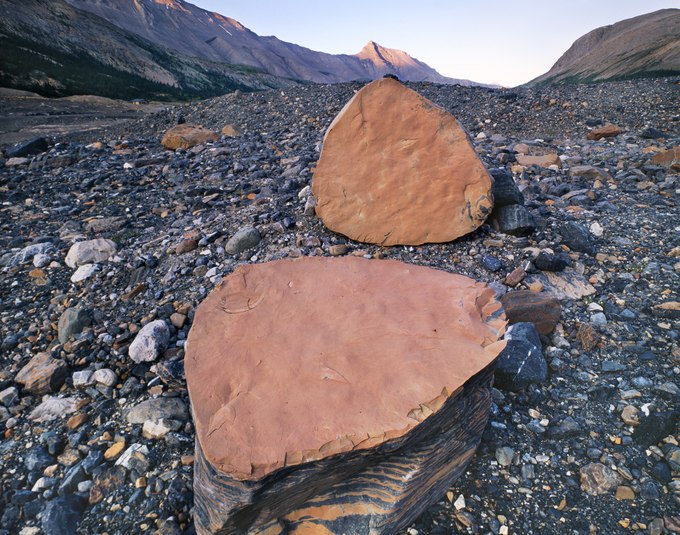In the Athabasca River Valley of western Alberta’s Rocky Mountain Range lies a field of glacial drift made up of limestone and sandstone gravel, stones, and boulders dropped off the retreating toe of the Athabasca Glacier a century ago. Among the rocks rests a boulder, once whole, now split perfectly in half on the slope of a terminal moraine. This kind of clean break can happen after a glacier has retreated, the ground may subside from buried ice melting beneath the surface or rise as it is released from the glacier’s extraordinary weight (or both). These effects cause rocks to fracture. Additionally, water can enter thin cracks and wedge a rock apart as it expands when frozen.
In the mid-19th century, during what is now known as “The Little Ice Age,” glaciers over much of the earth reached their largest extent. A mile from the edge of Athabasca Glacier, this hillock was once covered with hundreds of feet of ice. Since then, glaciers worldwide began thawing faster than they accumulated snow, even preceding the onset of human-induced climate effects. In the case of the Athabasca Glacier, it has lost half its volume, receded a mile and a half, and will entirely melt away in the next century.
Today, this de-glaciated land, ripe for ecological succession, lacks biological soil. Also, the high altitude’s cold climate will slow the re-establishment of lichens, wildflowers, shrubs, and trees, as evidenced by an almost complete lack of growth on this site after a century. Absent of the fecundity of flora and fauna, it feels desolate as it awaits life’s re-emergence.
Location research and commentary by James Baker.

